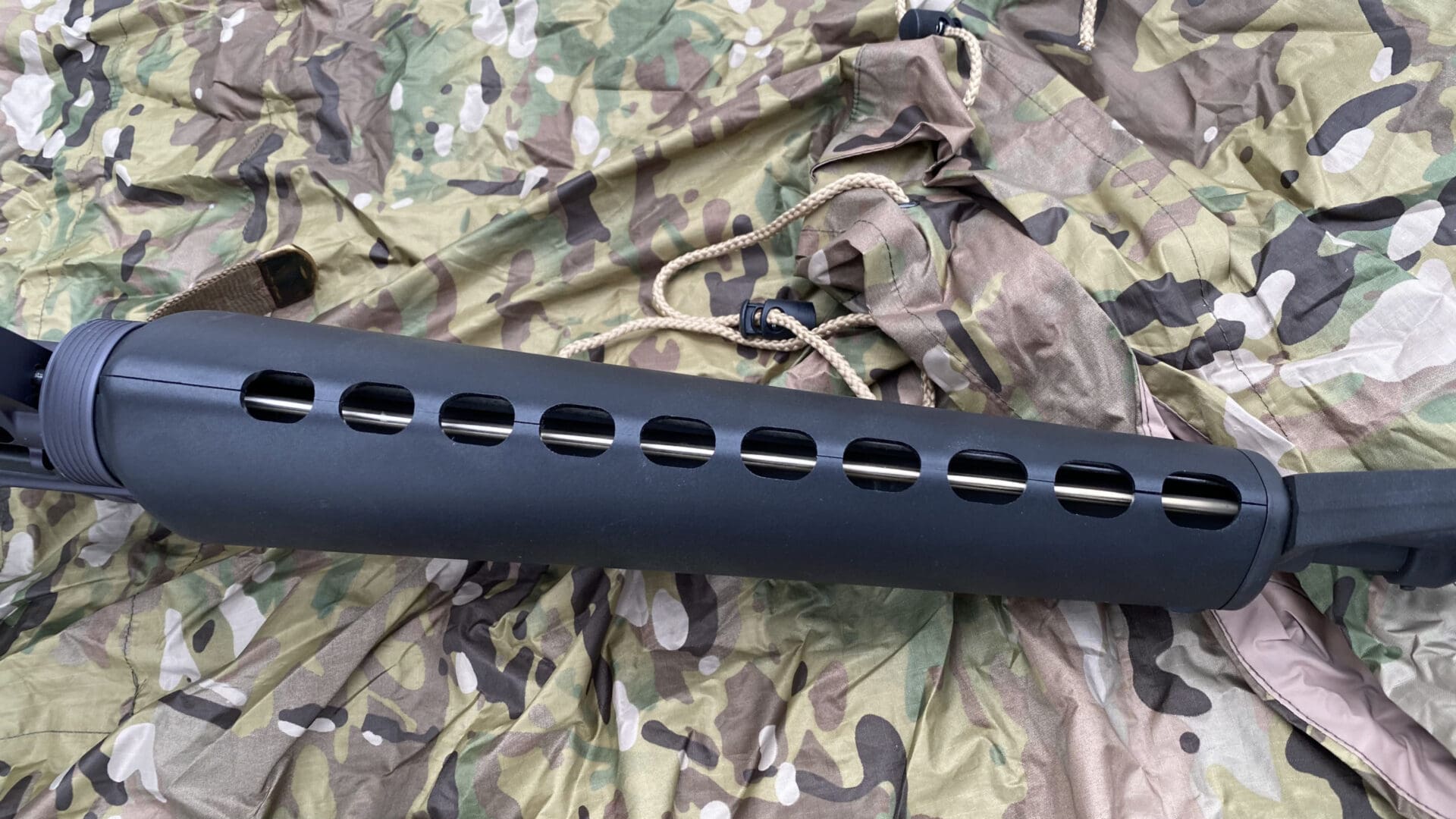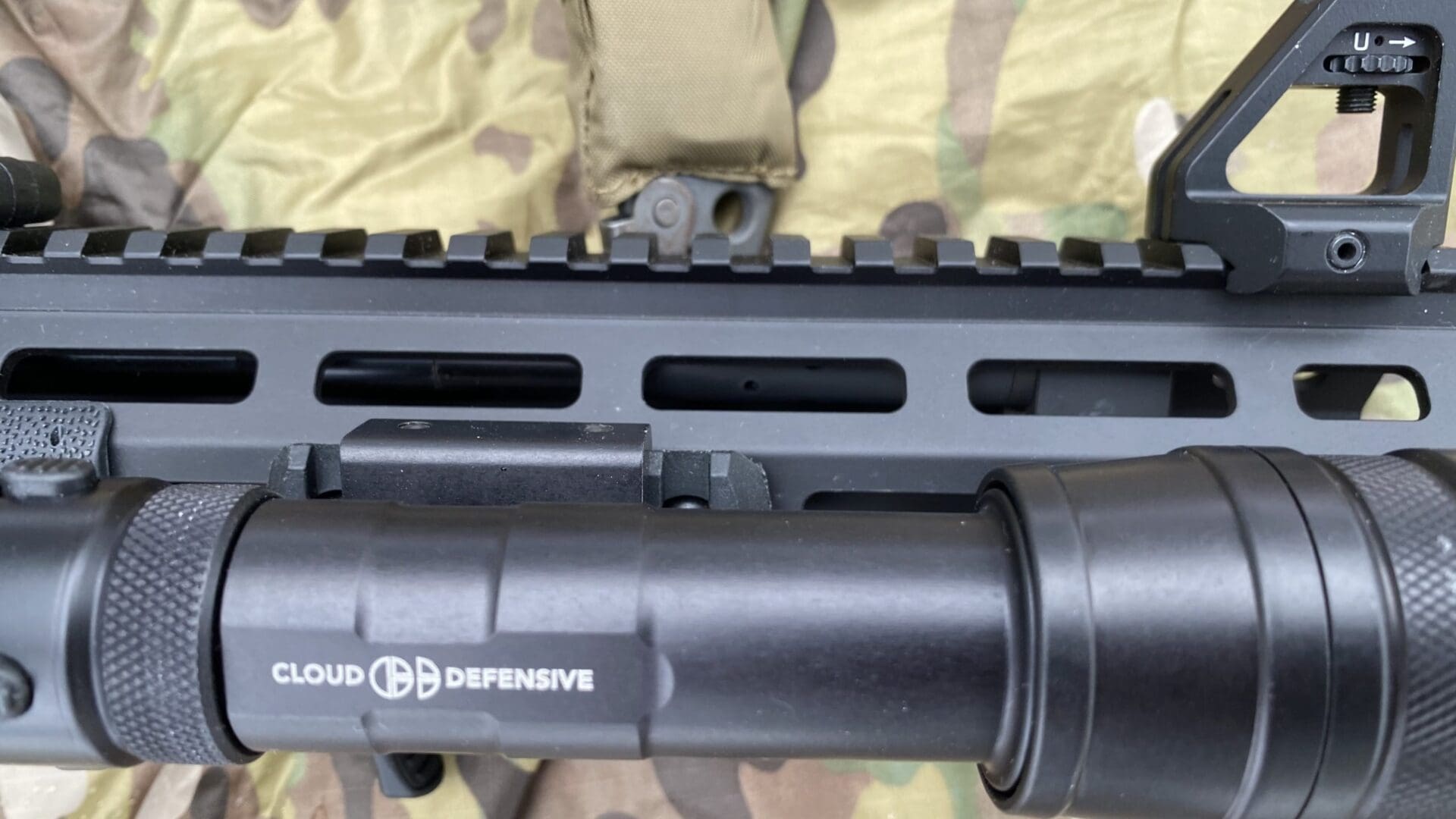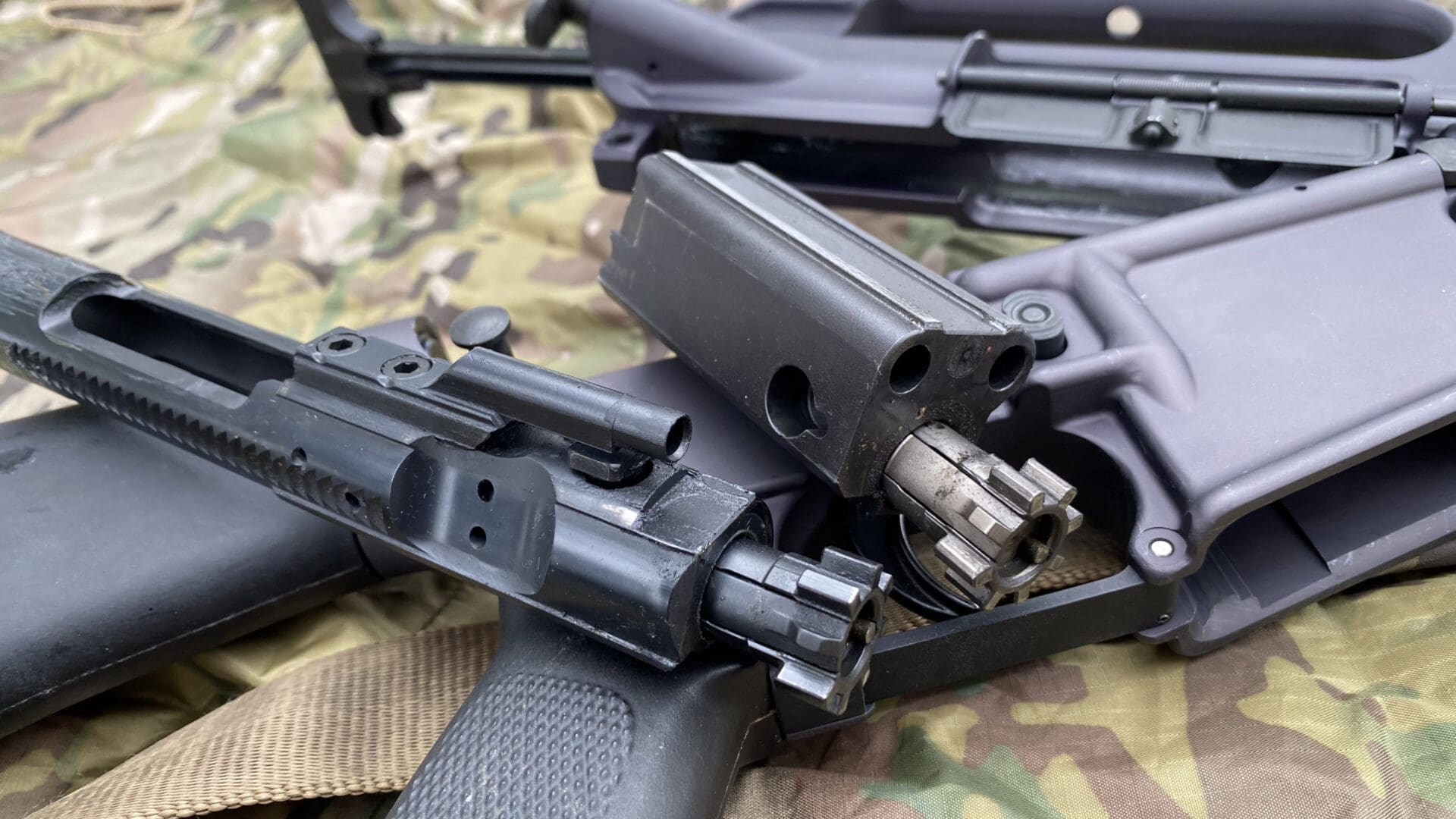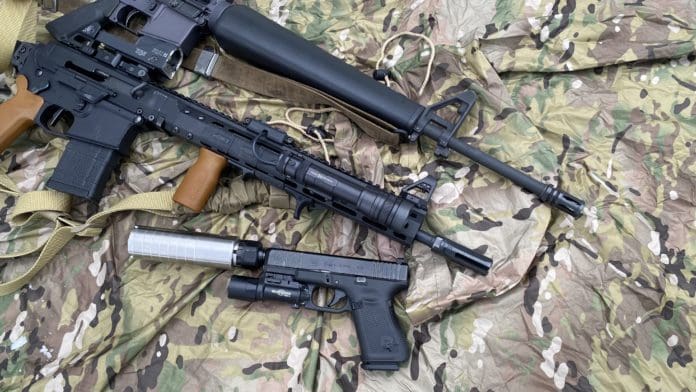Today’s question has a great deal to do with gas, but don’t worry it is in fact the fun kind. Reader Todd asks:
”Which is easier to suppress, a direct impingement (DI) or piston rifle? Which (suppressor) do you prefer?”
To answer the second part first, I really have no preference as far as suppressors go. I’ve shot dozens and have have a great time with all of them for the most part, and I’ll be posting some great suppressor reviews here on TTAG in the coming weeks.
The thing I have a particular preference for is what that suppressor does to the rifle as far as function goes. To look into my answer here we need to look at how these different systems work and just what makes them different in good and bad ways.
The reason I have no preference is because I own both types of rifle and they’re just good for different things. Piston guns generally aren’t as accurate as a DI rifle for several reasons, those being generally related to how the gas system is affixed to the barrel.
A DI gun has no moving parts above the barrel itself and as a result you can tune it pretty nicely. All the movement is occurring behind the barrel. You can also get free-floating handguards which certainly helps.

A piston rifle has more going on above the barrel, usually in the form of the piston assembly itself and that tends to be a bulky affair. There is more moving mass and this mass is usually comprised on a gas tube and multi-part piston assembly. This piston is sometimes a part of the bolt carrier and other times is a type of spring loaded plunger that drives the bolt back and retracts.

If I am going for accuracy, I will almost certainly pick a DI rifle. The AR-15 design is just so much more mature than the rest and there is a great deal of consistency and millions of man-hours of collective knowledge about them. The primary problem associated with a suppressed AR is how incredibly filthy they get.

The DI system is dirty by nature. For the newbies out there, an AR-15 rifle functions, in layman’s terms, by blowing pressurized gas from the burning powder of a fired round through a hole in the barrel back up a thin tube and into the receiver itself. This pressure forces the bolt carrier back and cycles the rifle.
With a suppressor installed, the amount of propellant pressure generated at firing is increased and more of the gas stays inside the gun. This is why you sometimes see rounds like 300 Blackout not cycling subsonic loads without a suppressor attached. There is a longer answer to this as far as subsonic vs. super sonic goes, but that is at least an example of pressure curve and how it is impacted by a suppressor.
A piston rifle with a suppressor attached will remain cleaner and cooler for a greater length of time and shouldn’t have the same reliably issues as far as cleanliness is concerned.

The main problem with getting a piston gun to run with a suppressor is there is zero crossover between different piston gun brands. A FN SCAR isn’t compatible with a BRN-180, but a Colt AR-15 is compatible with a SIG AR lower, and a SIG barrel can be installed on a Colt upper.
The AR-15 platform is generally like LEGOs in terms of interchangeability, but when you start mixing in piston guns, you’re sort of like that kid who brings Mega Bloks to the play date. It’s just not the same and it won’t line up. There are so many different piston uppers and guns out there and each one has slightly different requirements for what it takes to suppress them reliably.
The BRN-180 upper comes with a gas adapter for suppressor shooting. Many other guns comes with an adjustable switch for the gas, and occasionally you’ll see a setting for 1 or 2, with the manual saying ‘2 for suppressed’ or something like that. This setting is pretty much like a choke on a small engine. The settings either increase or decrease the gas intake to make for a difference in pressure.

Tuning a DI rifle is much easier, mostly because so many people do it with what amounts to the exact same parts. Different length gas systems do different things to the pressure cycle inside the gun itself.
A short pistol length tube has a sharp and high pressure curve, while a long rifle length tube offers a more graceful pressure arc. If you shoot a modern M4-style carbine next to a vintage 20” M16A1, you’ll clearly feel the difference in how soft the latter shoots.
Reliable function in a DI gun can be achieved simply by swapping out to a different buffer weight or putting in a new buffer spring. Rarely does this impact reliability between suppressed and unsuppressed shooting in this case.

A note is that a DI gun can get over-gassed with a suppressor in place quite easily. This means that there is an excessive amount of gas being blown back into the receiver and this can be uncomfortable to the shooter.
Gas can blow back through the upper and bleed out right into your shooting eye by way of the charging handle gap and cause eye irritation. This can be prevented with something like the PRI gas buster charging handle, which in large part mitigates this annoying situation.

To find out more about silencers and to get educated on them, as well as shop for brands and uses, head over to Silencer Shop. You can find the suppressors in this article and more. Silencer Shop makes it easy and can also help you with your tax stamp processing, too.
This article is really meant as an introduction to the concept and it gets much more detailed than this if you start to dig in. Not all rifles will run reliably with a suppressor attached, so if you are planning on using one, you had perhaps contact the manufacturer and see if they have tested their products suppressed. This will be especially important with piston rifles.





So a di is easier to suppress if you add a bunch of stuff.
Snicker, that’s what I got out of it too.
This article missed the mark.
In terms of cycling with a silencer either DI or piston can be equally reliable. The practical increase in dwell time increases the length of time that the gas system is pressurized and can effect reliability. Silencers do not increase pressure, they just increase time pressurized. Adjusting gas flow is just one way to account for this in either system, and dependent on the rig it may not be needed at all to insure reliable cycling.
In terms of increased fouling this will happen with any current semi-auto that is suppressed. The fouling gas intrudes through the chamber after the cartridge is unsealed during extraction. This is present in both DI and piston. The design of the standard AR upper just happens to let that gas out in the shooter’s face through the charging handle slot. This happens with DI and piston ARs both. Decreasing residual gas pressure in the chamber requires increasing the length of time between the bullet “uncorking” from the muzzle and when the empty case is unsealed from the chamber. Suppressor design also plays a role in the amount of residual gas pressure in the bore, and there are other variables that affect this.
Finally, overall sound suppression is often better with the DI system when compared to the piston if all other variables are similar. If the piston system has any sort of gas relief regulation it will produce a secondary “pop” of noise that will increase perceived noise. The magnitude of this secondary pop and it’s practical affect is largely dependent in caliber, rig, and suppression goals of the shooter.
DI is also noticeably quieter suppressed, all else being equal.
$7 tube of RTV > $100 “gas busting” charging handle. This article is just shilling for Brownell’s.
Hah. Yeah, I made my own CH gaskets exactly that way. Works great and one tube does a canoe-load of CHs.
Most piston rifles are not precision rifles. So accuracy degradation isn’t a factor, especially at sub 800m ranges.
As a left-handed shooter, I prefer pistons over DI. Since I mostly shoot suppressed, having a piston is a bonus. I have no problem shooting 10″ steel plates at 400m consistently, using my 14.5″ LWRC and a SilencerCo Omega.
YMMV
A lot of the blow back that makes the gun dirtier suppressed is coming from the chamber area, as opposed to the gas tube. Look at the brass that comes out of the suppressed ar 15, DI or piston, the brass is filthy. As soon as the brass begins ejecting the gas is blown back into the receiver.
THANKS ON INFOR
So your argument for why DI guns are somehow better to suppress (despite a lot of evidence to the contrary) is that you can buy a bunch of aftermarket parts to try to alleviate the problems with suppressing a standard DI gun causes?
THANK FOR NICE INFORMATION, VISIT OUR WEBSITE : https://telkomuniversity.ac.id/
Comments are closed.